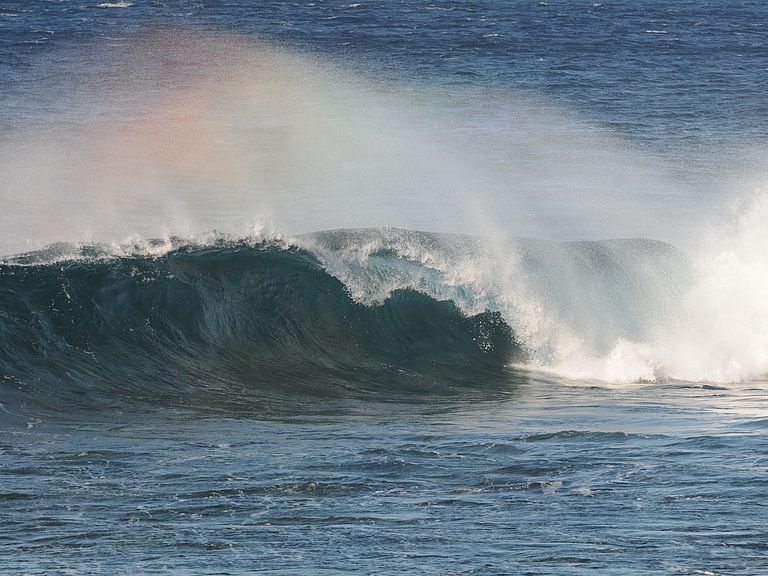An all-hands-on-deck moment to preserve the ocean
GEOMAR researchers comment on the international High Seas Treaty
“The ship has reached the shore.” With this statement, the President of the Intergovernmental Conference on Marine Biodiversity of Areas Beyond National Jurisdiction (BBNJ), Ambassador Rena Lee finally announced an agreement protecting the high seas that has been anticipated for nearly two decades. The historical breakthrough was reached in a 40-hours long concluding negotiation of the member states. More than 400 delegates from governments, United Nations (UN) agencies, non-governmental organizations and academia attended the meeting from 20 February to 4 March 2023 at the UN Headquarters in New York. The agreement has been welcomed across policy and governance institutions, non-governmental organisations and the wider society.
The ocean covers two thirds of our planet and is home to more than 250,000 known plant and animal species, from tiny plankton to large marine mammals. Researchers expect that up to ten times more species are still waiting to be discovered – and these numbers do not even include the multitude of microbes that further increase marine biodiversity. All of them are exposed to different human impacts, including climate change, fisheries, pollution and habitat destruction.
In areas beyond national jurisdiction – the vast open ocean outside of the exclusive economic zones (EEZ) of coastal states, the United Nations Law of the Sea regulates human activities. However, it had so far not directly covered the issue of establishing marine protected areas. The so-called High-Seas Treaty now provides the needed legal foundation to proclaim protected areas in the high seas. It can boost ambitions of achieving the “30x30” pledge of protecting 30 per cent of the world ocean by 2030 made by countries at the international biodiversity conference in Montreal in December 2022. It also supports other goals for sustainable development and biodiversity protection. In addition, it addresses sharing of benefits related to the exploitation of marine genetic resources, environmental impact assessments, capacity building and transfer.
The substance of the High-Seas Treaty has now been decided, however, the final text will be formally adopted in a later meeting after technical editing. This legally binding document then needs to be ratified by member countries to enter into force.
Comments from researchers at GEOMAR Helmholtz Centre for Ocean Research Kiel:
GEOMAR director Professor Dr. Katja Matthes:
“We finally have an international framework that gives us the tools to protect and use the ocean in a sustainable and equitable way. Although all nations across the world should have an interest in preserving the ocean as the basis of human life on our blue planet, options to advance protection by majority decisions and harness countries’ ambitions will help us to move forward. Science can also support the development of measures addressed in the treaty, including the development of transparent criteria for the various important activities in the high seas – including research. This is an all-hands-on-deck moment, and GEOMAR is ready to take a role in this context.”
Professor Dr. Martin Visbeck, physical oceanographer at GEOMAR:
“The agreement of the High-Seas Treaty shows that multilateral agreements can be advanced despite increasing geo-political tensions and demonstrate the willingness of our nations to address and reduce unsustainable human-ocean interactions. I see this as one important success early in the United Nations Decade of Ocean Science for Sustainable Development (2021-2030) in an area where the science is clear and political action was lacking”.
Dr. Rainer Froese, fisheries biologist at GEOMAR:
“Overfishing has severely decimated the iconic species of the high seas, such as tunas, swordfish, marlins and sharks. The new agreement finally provides the legal basis for closing large areas to fishing, thus giving these species a chance to recover.”
Dr. Matthias Haeckel, marine biogeochemist at GEOMAR:
“The Marine Biodiversity of Areas Beyond National Jurisdiction (BBNJ) agreement provides the needed strong incentive for the effective protection of deep-sea ecosystems, their biodiversity and functions, particularly towards the ongoing negotiations on international regulations for the exploitation of deep-sea minerals by the International Seabed Authority.”
Professor Dr. Ute Hentschel Humeida, marine microbiologist at GEOMAR
“It is particularly laudable that the equal and fair benefit sharing of genetic resources among developing nations and will be organized in an efficient way through a simple clearing house identifier of each project. Only later, when economic benefits materialize, there will be direct financial benefits to developed nations, thereby fostering capacity building in research.”
Professor Dr. Thorsten Reusch, marine ecologist at GEOMAR
“The real work now lies ahead of the international community to create protected areas (MPAs) that deserve their name and are not just ‘paper parks’ with no effective regulation of fisheries, energy production, shipping and other use which is most often the status quo today. But the important message is that there is now a pathway forward to implement such areas in a transparent, binding and accountable way.”

Ocean wave at El Hierro. Photo: Maike Nicolai, GEOMAR


